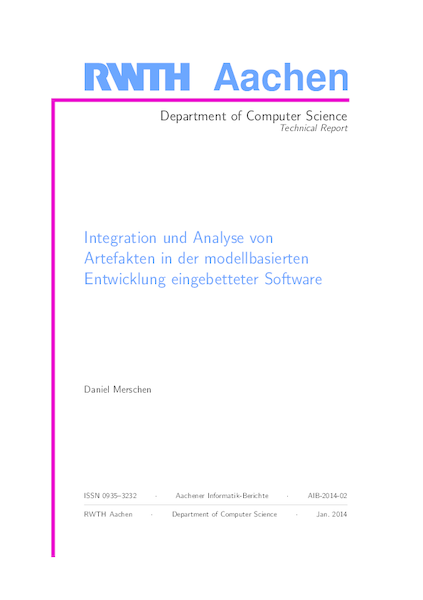Integration und Analyse von Artefakten in der modellbasierten Entwicklung eingebetteter Software
Nowadays, functional and safety requirements of vehicles can hardly be met without embedded software since a pure hardware-oriented realisation would be too complex and would result a huge number of electronic control units. Hence, the vehicle's weight would increase leading to a higher fuel consumption. During the last years, MATLAB/Simulink has become state of the art for the development of embedded software in the automotive domain. Furthermore, in order to make advantage of commonalities a software product line approach is applied. This kind of development raises new challenges in the context of complexity and evolution management of embedded software. For instance, dependencies within Simulink models as well as links among design artefacts like Simulink model and requirements document are frequently not obvious. Hence, later change requests become more and more complicated to incorporate. This thesis first presents a general concept for artefact integration and analysis in the context of embedded software development in the automotive domain. Second, the concept is realised with two implementation approaches following different paradigms. The model-based approach first parses the original artefacts into models of the Eclipse Modeling Framework (EMF) which are subsequently structurally optimised by model transformations to facilitate later analyses. This results in one EMF model per artefact, the so-called representative . The artefact integration is realised by links among the representatives' meta models. Analyses of artefacts, which are again realised by model transformations, now operate on these representatives leading to a further EMF model representing the analysis result. The second approach integrates artefacts via a central database. To this end, the original artefacts are first transferred into Java models applying tool-specific as well as Java functionality. In the next step, these models are persisted in the database where they can be linked to each other. Analyses operate on both Java models and the database and are, hence, implemented in Java. After a detailed explanation, the suitability of the approaches for artefact integration and analysis in an industrial context is evaluated based on case studies and developers' opinions. To this end, the run time effciency and the scalability to huge Simulink models are investigated. Furthermore, generalisability and extensibility are discussed. Since each approach has to be adaptable to company-specific needs, the complexity of analysis implementation and the necessary background knowledge are considered as well.
Author
